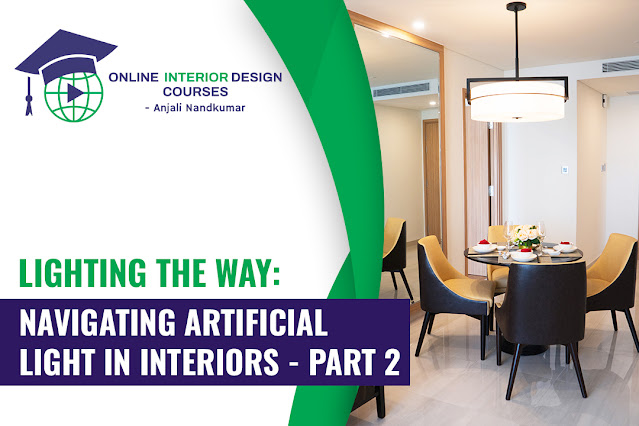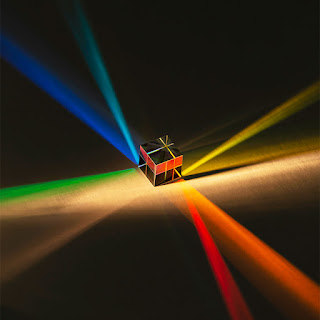Lighting the Way: Navigating Artificial Light in Interiors - Part 2
In this blog, we'll shine a light on artificial illumination, a vital aspect of creating ambience and functionality in any space. So, let's dive into the realm of artificial light and discover how it transforms our surroundings.
Understanding
Artificial Light:
Artificial
light, in simple terms, is light created by humans. It encompasses various
sources such as candlelight, firelight, gaslight, and, particularly in this
discussion, electric light. Here, we'll focus on the magical world of electrical lighting and its
transformative role in interior spaces.
Why Artificial
Light Matters:
Artificial light steps in when natural light takes a bow. There are instances when we need more light than what the sun offers, or we aim to craft specific moods within a space. This is where artificial light becomes a design superhero.
Artificial light is a versatile tool for designers and decorators, offering the following advantages:
Ease of
Effect:
It allows us to achieve desired effects easily and swiftly, adapting the atmosphere to our liking.
Adjustable
Intensity:
The intensity of artificial light can be easily changed, directed, or focused, providing flexibility in creating different lighting scenarios.
Instant
Ambiance Change:
Room colour can be transformed with a click, solely through the strategic use of artificial lights, without altering wall colours.
Creating
Varied Effects:
Lighting can be manipulated to produce a range of
effects, tailoring the ambiance to suit the specific requirements of a space.
Applications
of Artificial Lighting:
When selecting artificial lighting, it's crucial to consider the function and purpose of the space. Let's break down the three main types of artificial lighting:
Ambient or
General Lighting:
Also known as general lighting, ambient light
provides overall illumination for a room.
It ensures comfortable movement from one point to another and is commonly used in all rooms, including relaxation spaces like spas or meditation rooms.
Fixtures such as wall-mounted lights, ceiling lights, or pendant lights, like chandeliers, serve as ideal choices for general lighting.
Task Lighting:
Task lighting comes into play when precision and
efficiency are essential for specific activities.
Best suited for areas where ambient light alone is
insufficient, such as reading areas, study tables, kitchen workstations, and
office workstations.
Pendant lights, table lamps, floor lamps, track or
recessed lights are examples that can be strategically placed to achieve the
desired effect.
Accent
Lighting:
Accent lights are employed to highlight specific
features like sculptures, art pieces, paintings, or plants.
They add an extra layer of emphasis to unique designs
on walls or ceilings.
Accent lighting, when combined with ambient light,
creates a captivating interplay of light and shadow.
Scones, floodlights, recessed lights, and track
lights can be used as effective accent lights.
Effect
Lighting - Elevating the Drama:
Beyond the basics, accent lighting can be taken a
step further with effect lighting. This type of lighting is employed to create
dramatic effects, often embedded in architectural elements.
Effect lighting
creates dramatic effects by placing lights around structures.
Is often used indoors for crown moulding and outdoors
for landscaping, pergolas, or facades.
Lighting Tips
for a Well-Lit Space:
Whether you're designing an office, a restaurant, a
bedroom, or a kitchen, the key is to strike a balance between ambient light,
tasks light, and/or accent light. This creates a harmonious and aesthetically
pleasing environment.
Illuminate your understanding and elevate your skills
with our online interior design course on Udemy, guided
by architect and interior designer Anjali Nandkumar.
The course will empower you to create visually stunning and functionally
harmonious interiors. Enroll now and brighten your design journey! For more
information or to make an online enquiry
for Interior Design courses, reach out to us.
Ref. https://onlineinteriorcourses.blogspot.com/2024/01/onlineinteriordesigningcourseinlighting.html






.jpg)



.jpg)

Comments
Post a Comment